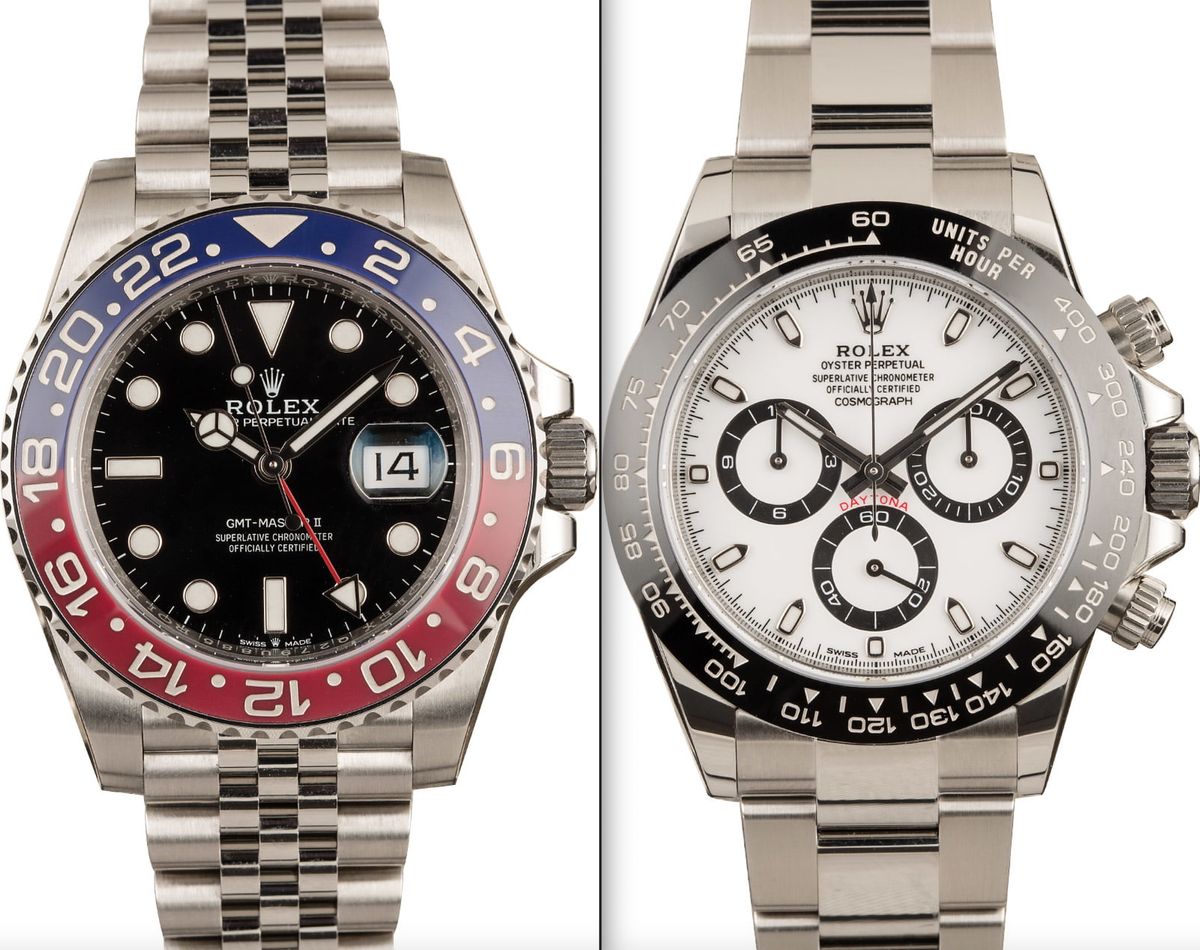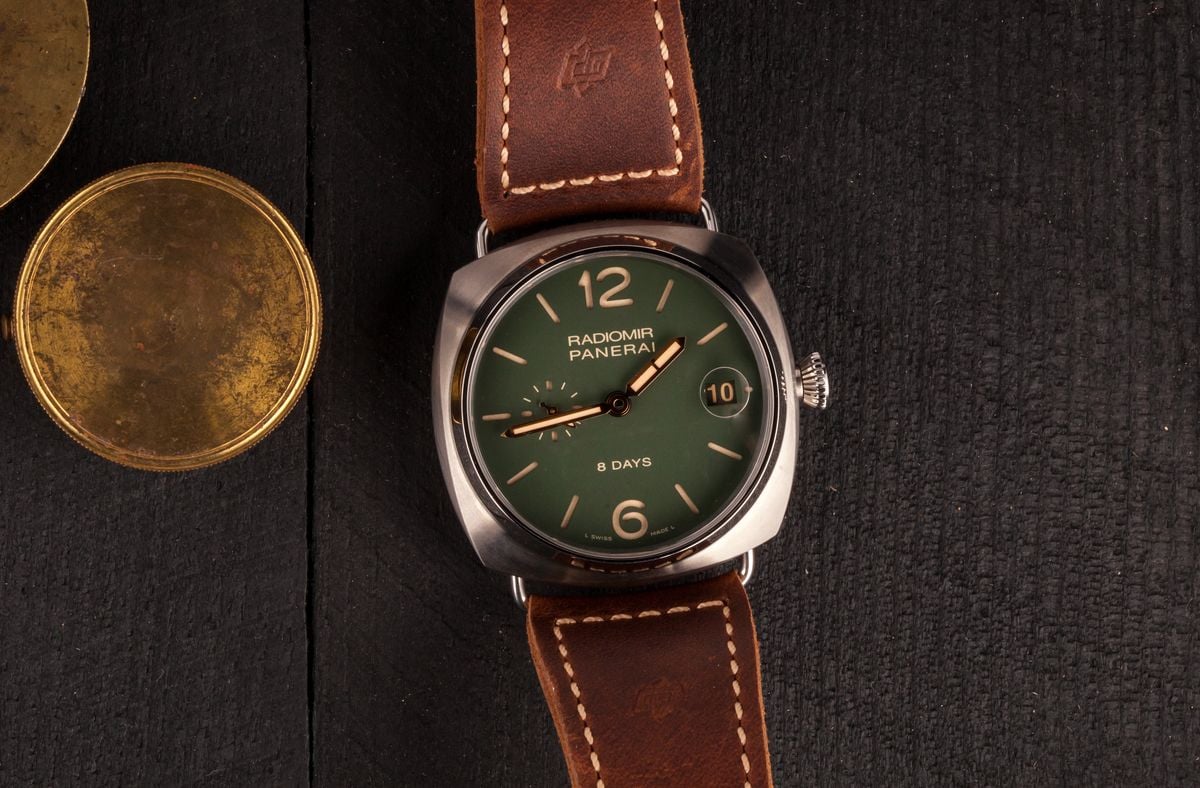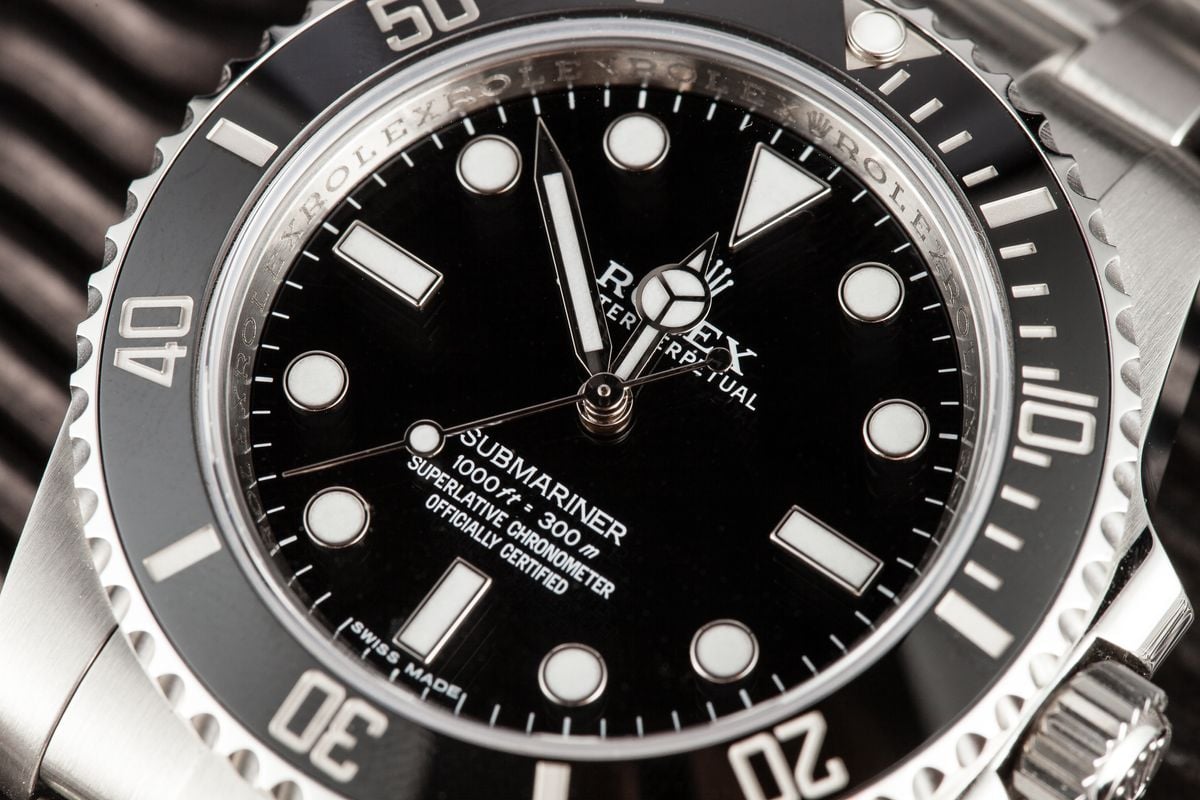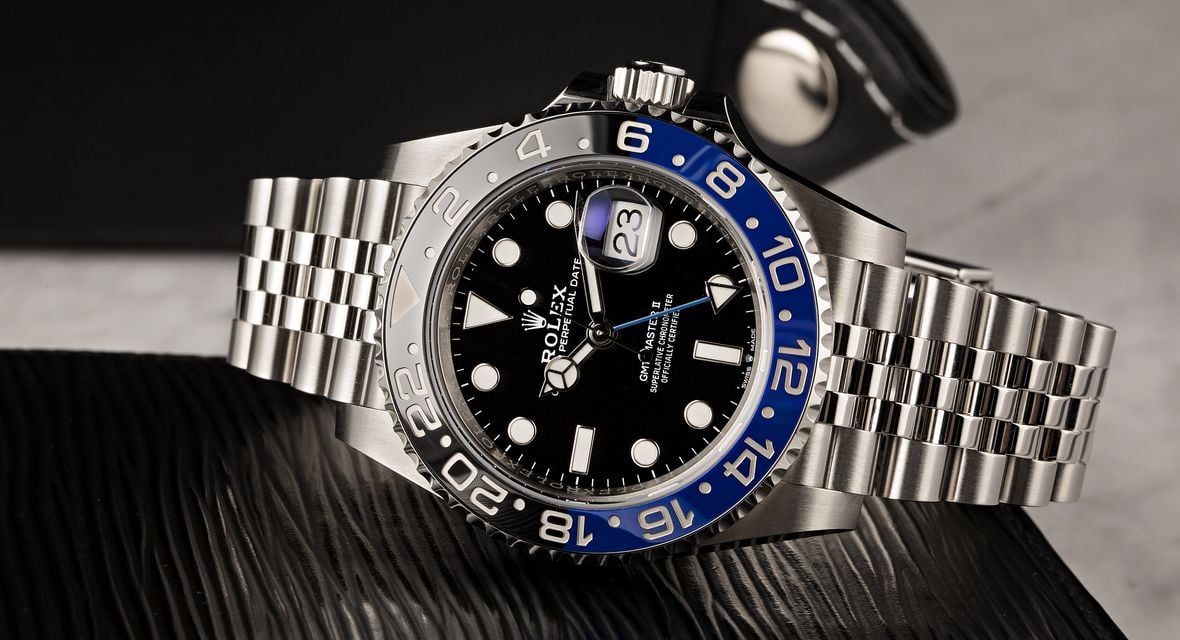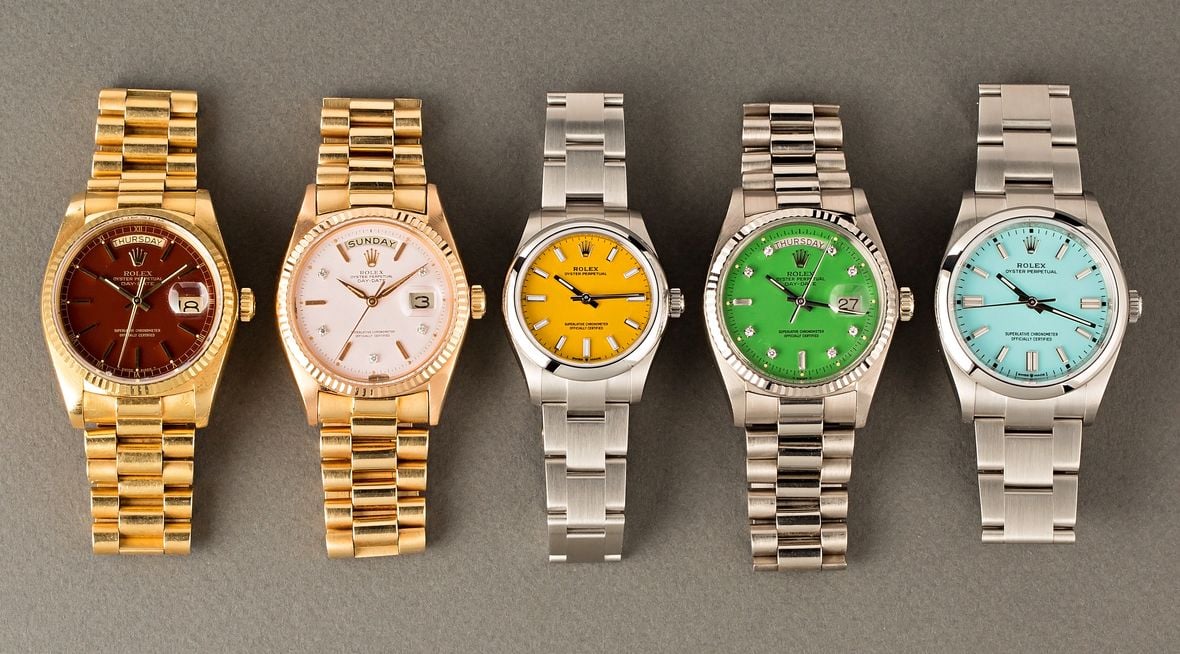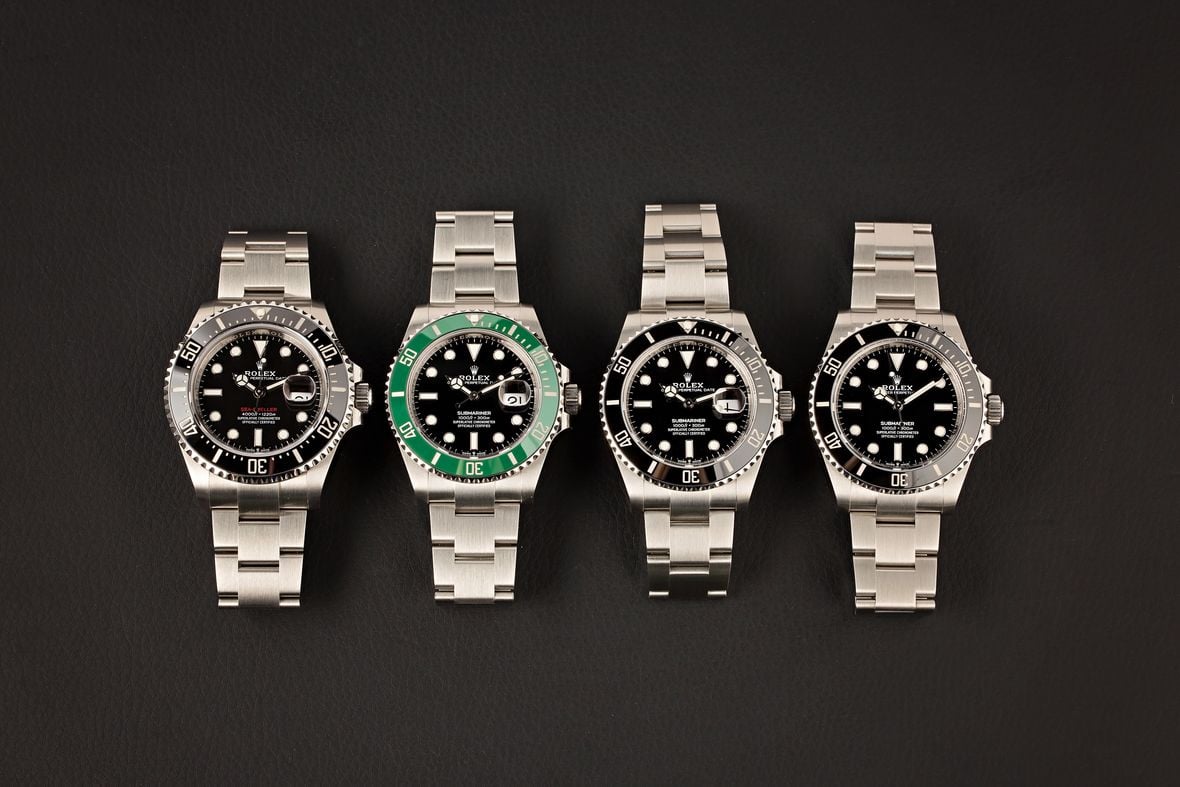Rolex is a formidable competitor in the world of professional luxury watches. From spelunking and mountain climbing to flying commercial planes, there’s a tool watch in the brand’s catalog to cater to nearly any profession. Among the most notable and sought-after are the Rolex GMT-Master II and the Rolex Daytona Cosmograph. Both watches have been in production for decades and have been modified numerous times, making them exciting models to collect.
Each timepiece accommodates a different profession, with the Rolex GMT Master II offering multiple timezone capabilities for pilots and other avid travelers and the Daytona providing stopwatch functions and a tachymeter bezel for automotive racing. In this comparison guide, we will take a closer look at these two ultra-desirable Rolex models to see what sets them apart from each other.
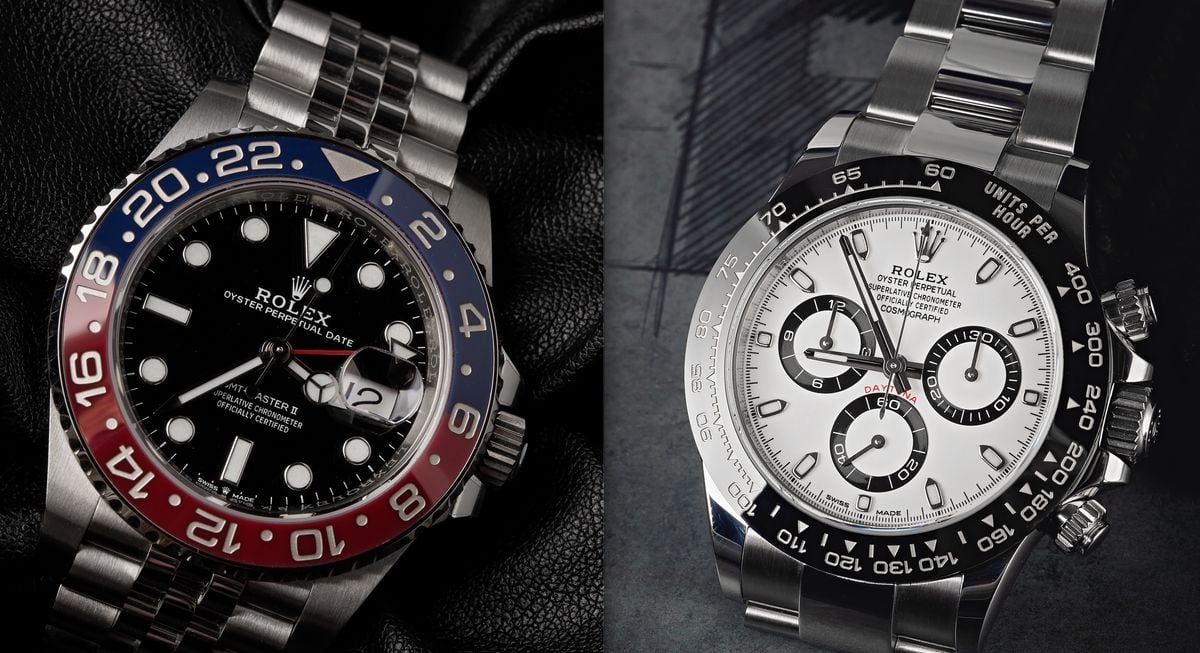
Rolex GMT-Master II
The original Rolex GMT Master was introduced in the 1950s. There was no better time for the now-famous pilot’s watch to hit the market, as the commercial flight was just starting to expand overseas. Initially, the GMT-Master only offered the ability to read home and local time. However, in the 1980s, the Rolex GMT-Master II was introduced and brought with it an independently adjustable 24-hour hand, which enabled the watch to track an additional third time zone with its bi-directional 24-hour bezel.
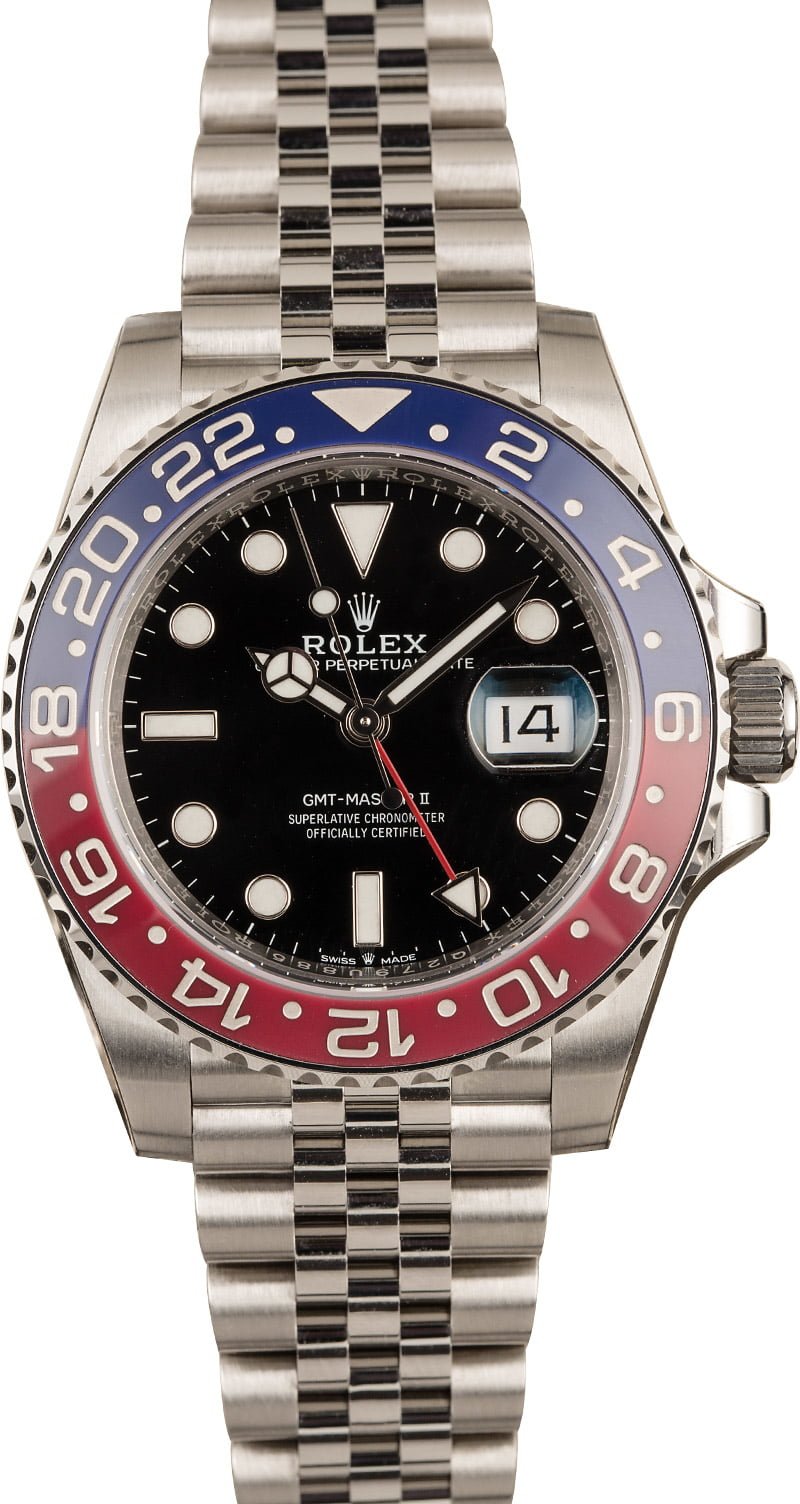
The next several decades saw many notable upgrades to the Rolex GMT-Master II collection, including a Cerachrom bezel, a triple-sealed Triplock screw-down crown, and a completely redesigned case and bracelet. The Caliber 3186 movement was introduced around 2007 and included Rolex’s patented paramagnetic blue Parachrom hairspring, along with a refined jump-hour mechanism that allowed for a smoother operation of the independently adjustable hour hands. The current Caliber 3285 includes the same features as its predecessor but follows an entirely different design and adds Rolex’s Chronergy escapement, which enables the watch to have a longer 70-hour power reserve.
Throughout its impressive production run, the Rolex GMT-Master II has included two-tone, all steel, and all-gold metal options (including all three colors of gold). It also has featured both the three-link Oyster bracelet and the dressier five-link Jubilee bracelet. At the present time, the Rolex GMT-Master II collection is available with both styles of bracelets; however, it should be noted that at the present time, solid gold and two-tone models are exclusively offered with Oyster bracelets, while the stainless steel models are only offered with the Jubilee.
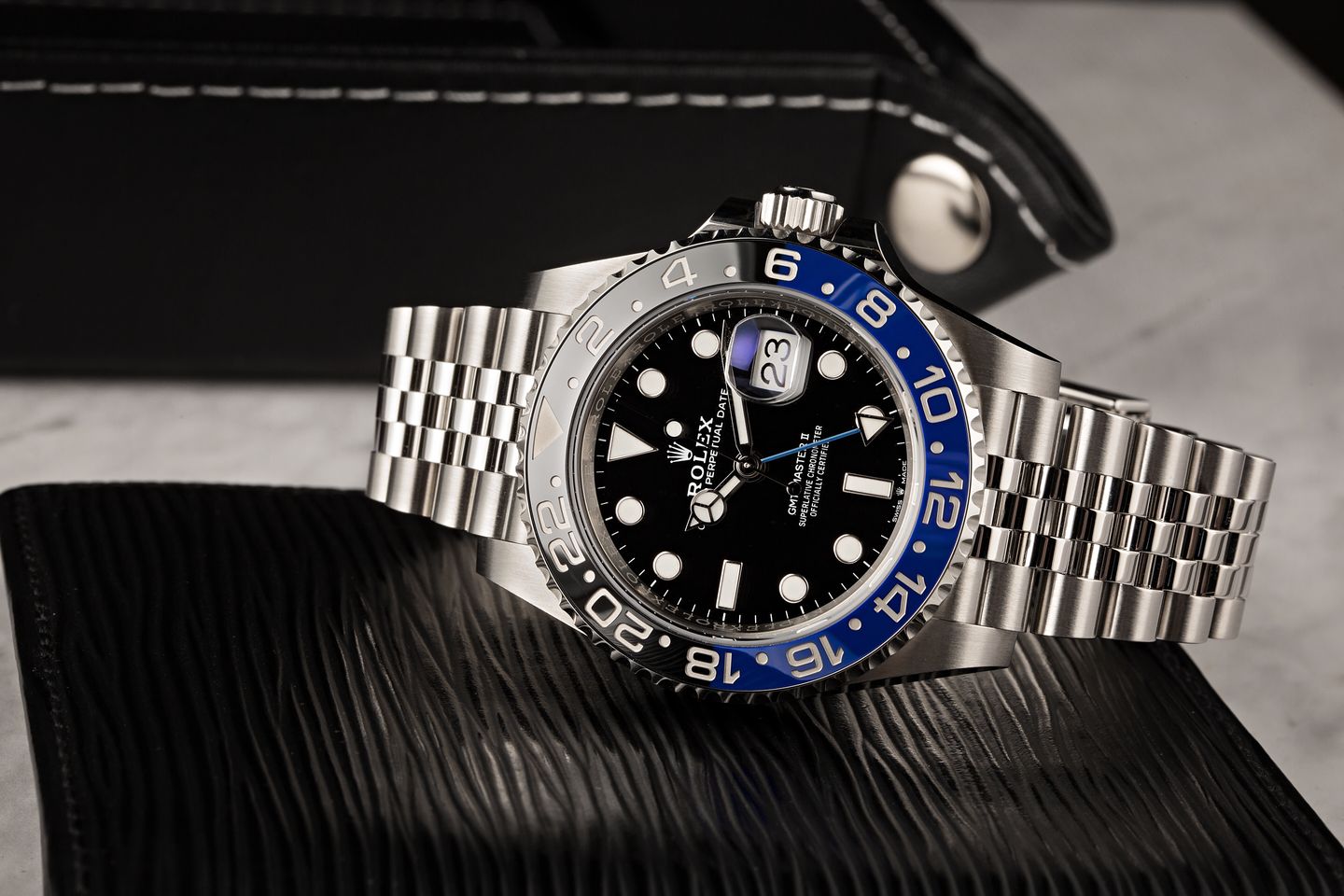
Throughout the years the bezel on the Rolex GMT-Master II has also been produced in a number of different styles and colors. More recently, the bezel was upgraded to Cerachrom ceramic, and at the time of writing, the GMT-Master II collection is available with either a black and blue (“Batman”), a red and blue (“Pepsi”), or a black and brown (“Root Beer”) bezel insert. Rolex discontinued the all-black ceramic insert in 2019, along with all yellow gold and Yellow Rolesor models, leaving only bi-color bezels available as options on the current GMT-Master II collection.
It’s also worth noting that the Rolex GMT-Master II maintains a standard 40mm case size. The screw-down crown was recently upgraded from the Twinlock variety to a Triplock crown; however, the watch still offers the same 100-meter water-resistance rating. Additionally, the current generation of the Rolex GMT-Master II also features a Maxi dial filled with Chromalight plots for maximum visibility in low-light conditions.
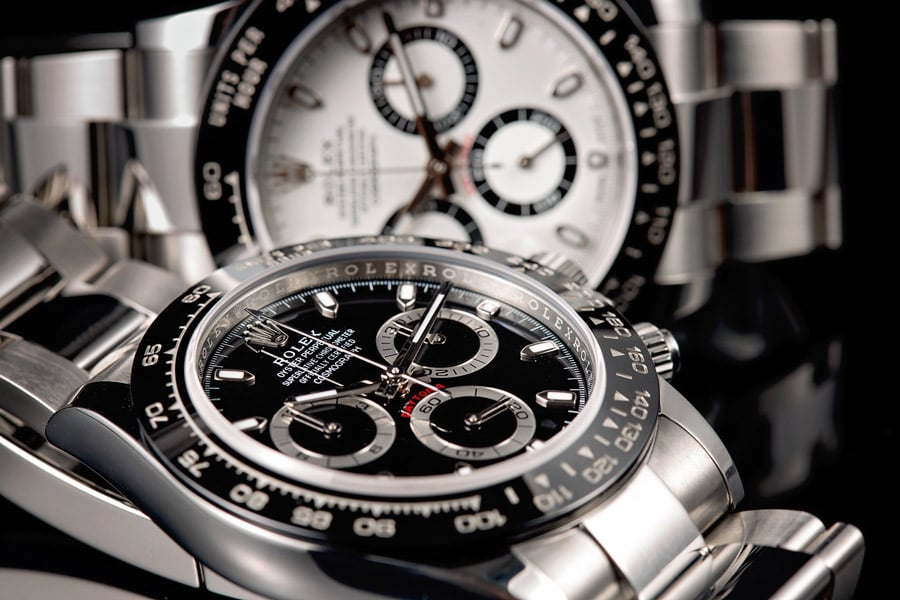
Rolex Cosmograph Daytona
Rolex had been producing chronograph watches for a number of years; however, the first actual Daytona did not make an appearance until 1963 with the introduction of the ref. 6239. With that in mind, it wasn’t until a couple of years after its release in 1965 that the ‘Daytona’ name was added to the dial as a nod towards the brand’s connection to the iconic 24 Hours of Daytona race. Today, the Rolex Daytona is closely associated with the fast-paced world for motorsport both for its history and its ability to calculate driving speeds and precisely measure elapsed time.
Like the Rolex GMT-Master II, the Daytona saw numerous upgrades to the collection throughout the years, with the most notable being the arrival of the ref. 116520 in 2000. Equipped with the Caliber 4130, the ref. 116520 was the first Cosmograph Daytona to run on a movement made entirely in-house. Before that, the movement came from Zenith and was significantly modified by Rolex to include a new escapement, a lower oscillation rate of 28,800bph, and the removal of the date feature.
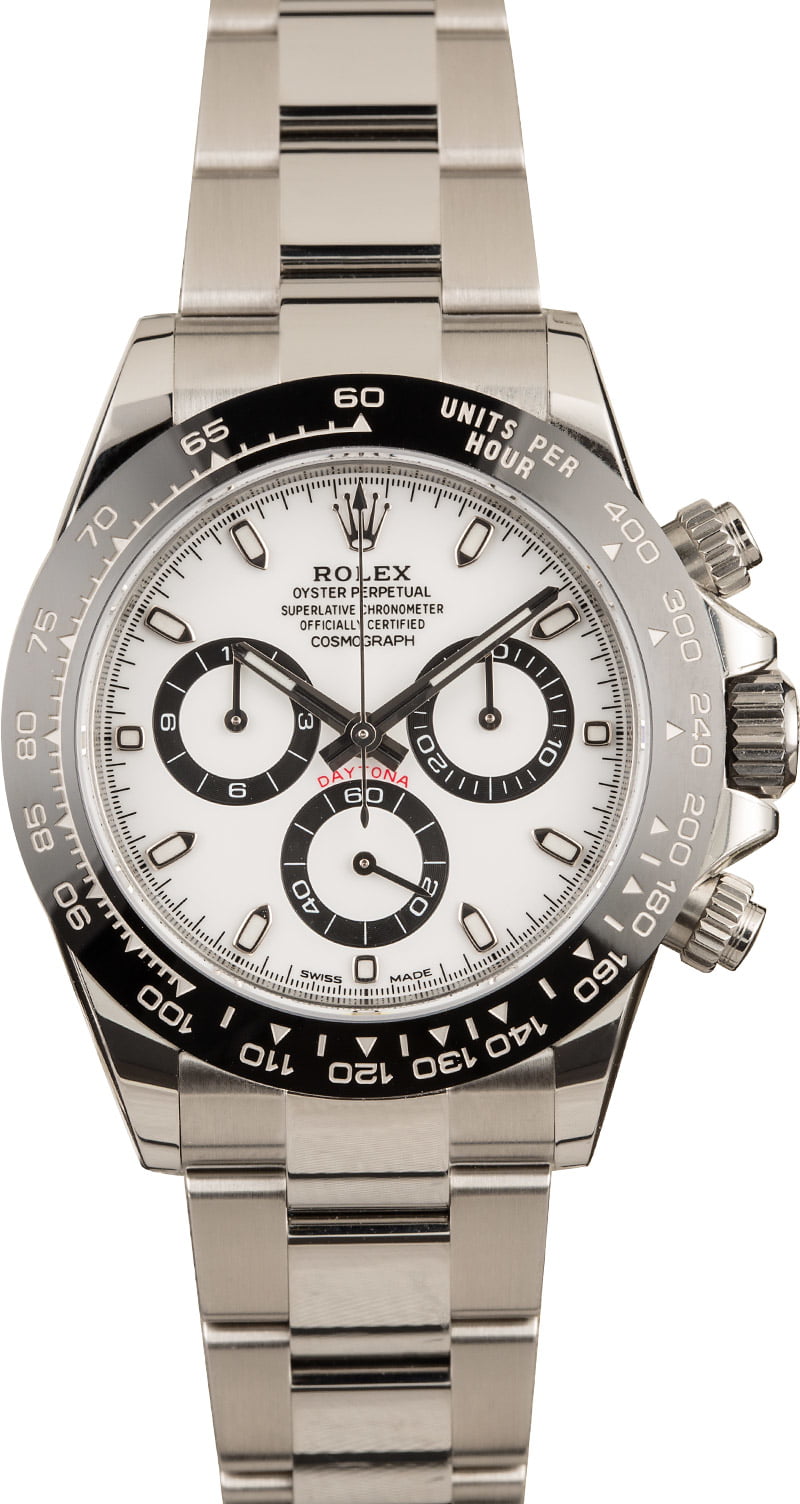
The “El Primero” caliber 4030, as it is often known, was housed within the ref. 16520 generation of Daytona watches and replaced the manual-winding, 4-digit series that preceded it. The in-house Cal. 4130 continues to power the current generation of Rolex Daytona watches, although it has quietly undergone a number of subtle improvements over the years, such as the addition of the brand’s blue Parachrom hairspring and updates to a few of its gears.
Today, the current Rolex Daytona collection is available with either a solid 18k gold or “Cerachrom” ceramic bezel, as the standard stainless steel bezel option has been discontinued. Gold bezels are available in yellow, white, and Everose, while Cerachrom bezel color options include black (stainless steel and gold models) and chestnut brown (platinum models only). However, unlike the Rolex GMT-Master II, there will likely never be a bi-color bezel option for the Daytona, as the split-color design is specifically intended for use with a 24-hour scale, and would not suit the tachymeter function of the Daytona’s bezel.
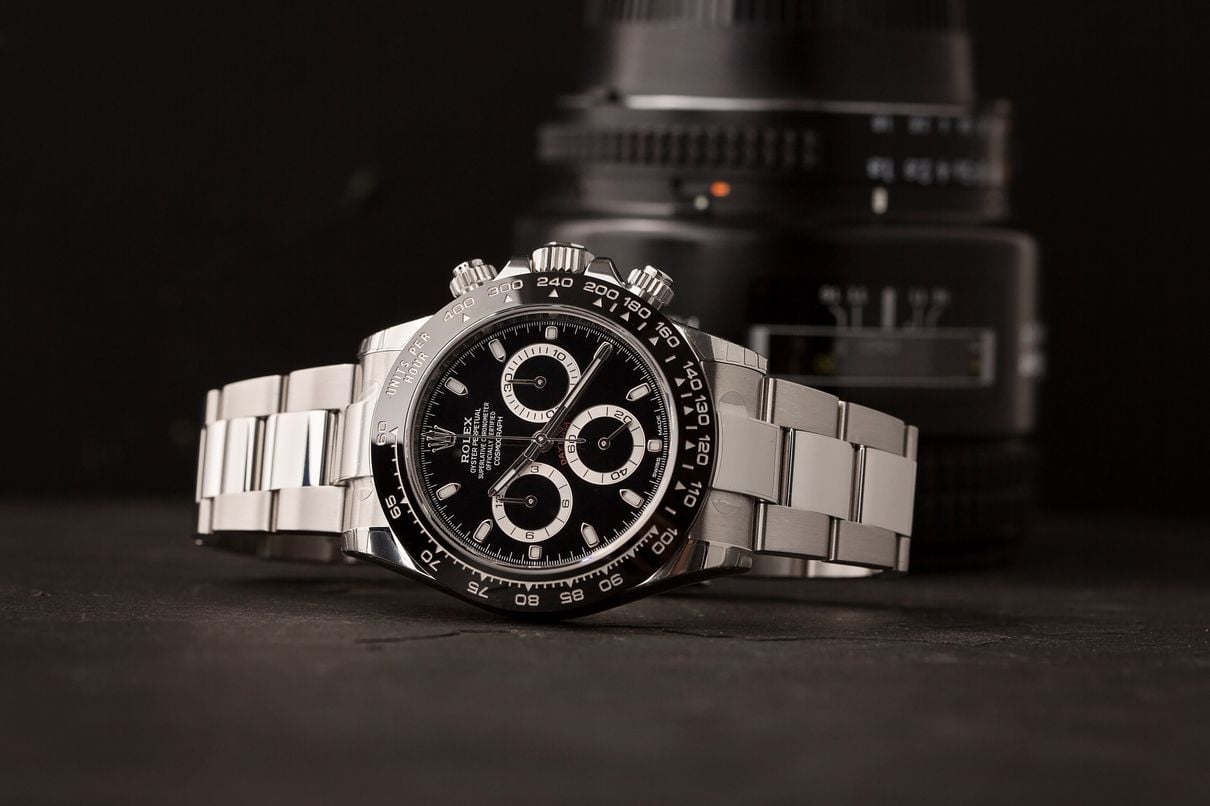
Similar to the Rolex GMT-Master II, the Daytona is also available in a wide range of metal options, including stainless steel, two-tone steel and yellow gold, solid 18k gold (all three colors), and even full 950 platinum. The Daytona also offers the same 40mm case size and provides the same water-resistance rating of 100 meters with a Triplock crown and screw-down chronograph pushers. The dial and hands on the modern Daytona are also adorned with blue Chromalight lume (just like other modern Rolex watches) and the model is offered on either a three-link Oyster bracelet or a rubber Oysterflex bracelet, with the dressier Jubilee not currently available as an option at the present time.
While the Rolex GMT Master II and Daytona share many features in common, such as Triplock screw-down crowns and 40mm case diameters, the features that visually set these two watches apart the most are the chronograph pushers on the side of the Daytona’s case and the registers on the Daytona’s dial. These features give the Daytona a slightly more complex design, whereas the GMT-Master II enjoys a more straight-forward and traditional aesthetic.
